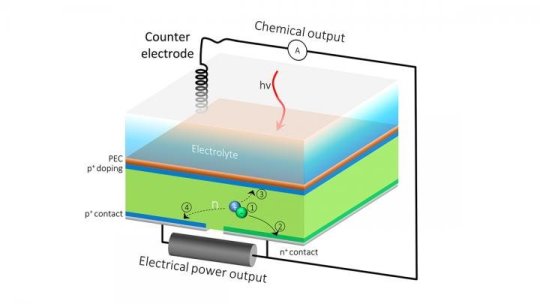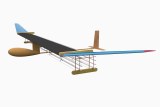That’s what I signed up for.
No idea what I’m looking at though but hopefully after viewing a couple I work it out haha
ahh- excellent. You’ll know it when you see it… Just look to where they tell you and it’ll be pretty close to the time they say, give or take a bit, and you’ll see a fast moving light (similar to a star) move across the sky.
this one is kind of how we saw it
What I thought was it on Sunday wasn’t that fast so might have just been a plane.
I’ll keep my eye out!
Dunno how anyone misses it if it’s that loud…
the growth in sequencing technology. with the reduction in $$$, has been astonishing
Scientists launch plan to map genes of all complex life on earth
LONDON, (Reuters) - Scientists launched a vast project on Thursday to map the genetic code of all 1.5 million known species of complex life on earth, aiming to complete the work within a decade.
They described the Earth BioGenome Project (EBP) as “the next moonshot for biology” after the Human Genome Project, a 13-year $3 billion endeavor to map human DNA which was completed in 2003.
The EBP is expected to cost $4.7 billion and “will ultimately create a new foundation for biology to drive solutions for preserving biodiversity and sustaining human societies,” said Harris Lewin, a professor at the University of California in the United States and chair of the EBP.
“Having the roadmap, the blueprints … will be a tremendous resource for new discoveries, understanding the rules of life, how evolution works, new approaches for the conservation of rare and endangered species, and … new resources for researchers in agricultural and medical fields,” he told a briefing in London.
This plan will draw in major research efforts from across the world, including a U.S.-led project aiming to sequence the genetic code of all 66,000 vertebrates, a Chinese project to sequence 10,000 plant genomes, and the Global Ant Genomes Alliance, which aims to sequence around 200 ant genomes.
In Britain, genome sequences for red and grey squirrels, the European robin, the Fen raft spider and the blackberry will be added to the vast database.
The volume of biological data that will be gathered is expected to be on the “exascale” - more than that accumulated by Twitter, YouTube or the whole of astronomy.
Jim Smith, director of science at the Wellcome Trust global health charity, said the project would be “internationally inspirational” and - like the Human Genome Project - had the potential to transform research into health and disease.
“From nature we shall gain insights into how to develop new treatments for infectious diseases, identify drugs to slow ageing, generate new approaches to feeding the world or create new bio materials,” he told the briefing.
So far, fewer than 3,500 complex life species, or only about 0.2 percent, have had their genomes sequenced. Fewer than 100 of those have been done to “reference quality” level useful for researchers to access and learn from.
The plan is for the EBP to add many thousands more reference quality genome sequences, which scientists say will revolutionize understanding of biology and evolution, boost conservation efforts and protect biodiversity.
Lewin said signs of rapid decreases in biodiversity and increases in the number of species becoming endangered or extinct underlined the urgency of the project.
“We desperately need to catalogue life on our planet now,” he said. “We will do this not because it’s easy, but because it is hard and because it’s important to do.”
Reporting by Kate Kelland; editing by Andrew Roche
for real???
yeah
And they could look to Blitz, which seems to have a large number of ants.

A solar cell that does double duty for renewable energy
Date:
October 29, 2018
Source:
DOE/Lawrence Berkeley National Laboratory
Summary:
Researchers have developed an artificial photosynthesis device called a ‘‘hybrid photoelectrochemical and voltaic (HPEV) cell’’ that turns sunlight and water into two types of energy - hydrogen fuel and electricity.
Share:
FULL STORY

The HPEV cell’s extra back outlet allows the current to be split into two, so that one part of the current contributes to solar fuels generation, and the rest can be extracted as electrical power.
Credit: Berkeley Lab, JCAP
In the quest for abundant, renewable alternatives to fossil fuels, scientists have sought to harvest the sun’s energy through “water splitting,” an artificial photosynthesis technique that uses sunlight to generate hydrogen fuel from water. But water-splitting devices have yet to live up to their potential because there still isn’t a design for materials with the right mix of optical, electronic, and chemical properties needed for them to work efficiently.
Now researchers at the U.S. Department of Energy’s Lawrence Berkeley National Laboratory (Berkeley Lab) and the Joint Center for Artificial Photosynthesis (JCAP), a DOE Energy Innovation Hub, have come up with a new recipe for renewable fuels that could bypass the limitations in current materials: an artificial photosynthesis device called a “hybrid photoelectrochemical and voltaic (HPEV) cell” that turns sunlight and water into not just one, but two types of energy – hydrogen fuel and electricity. The paper describing this work was published on Oct. 29 in Nature Materials .
Finding a way out for electrons
Most water-splitting devices are made of a stack of light-absorbing materials. Depending on its makeup, each layer absorbs different parts or “wavelengths” of the solar spectrum, ranging from less-energetic wavelengths of infrared light to more-energetic wavelengths of visible or ultraviolet light.
When each layer absorbs light it builds an electrical voltage. These individual voltages combine into one voltage large enough to split water into oxygen and hydrogen fuel. But according to Gideon Segev, a postdoctoral researcher at JCAP in Berkeley Lab’s Chemical Sciences Division and the study’s lead author, the problem with this configuration is that even though silicon solar cells can generate electricity very close to their limit, their high-performance potential is compromised when they are part of a water-splitting device.
The current passing through the device is limited by other materials in the stack that don’t perform as well as silicon, and as a result, the system produces much less current than it could – and the less current it generates, the less solar fuel it can produce.
“It’s like always running a car in first gear,” said Segev. “This is energy that you could harvest, but because silicon isn’t acting at its maximum power point, most of the excited electrons in the silicon have nowhere to go, so they lose their energy before they are utilized to do useful work.”
Getting out of first gear
So Segev and his co-authors – Jeffrey W. Beeman, a JCAP researcher in Berkeley Lab’s Chemical Sciences Division, and former Berkeley Lab and JCAP researchers Jeffery Greenblatt, who now heads the Bay Area-based technology consultancy Emerging Futures LLC, and Ian Sharp, now a professor of experimental semiconductor physics at the Technical University of Munich in Germany – proposed a surprisingly simple solution to a complex problem.
“We thought, ‘What if we just let the electrons out?’” said Segev.
In water-splitting devices, the front surface is usually dedicated to solar fuels production, and the back surface serves as an electrical outlet. To work around the conventional system’s limitations, they added an additional electrical contact to the silicon component’s back surface, resulting in an HPEV device with two contacts in the back instead of just one. The extra back outlet would allow the current to be split into two, so that one part of the current contributes to solar fuels generation, and the rest can be extracted as electrical power.
When what you see is what you get
After running a simulation to predict whether the HPEC would function as designed, they made a prototype to test their theory. “And to our surprise, it worked!” Segev said. “In science, you’re never really sure if everything’s going to work even if your computer simulations say they will. But that’s also what makes it fun. It was great to see our experiments validate our simulations’ predictions.”
According to their calculations, a conventional solar hydrogen generator based on a combination of silicon and bismuth vanadate, a material that is widely studied for solar water splitting, would generate hydrogen at a solar to hydrogen efficiency of 6.8 percent. In other words, out of all of the incident solar energy striking the surface of a cell, 6.8 percent will be stored in the form of hydrogen fuel, and all the rest is lost.
In contrast, the HPEV cells harvest leftover electrons that do not contribute to fuel generation. These residual electrons are instead used to generate electrical power, resulting in a dramatic increase in the overall solar energy conversion efficiency, said Segev. For example, according to the same calculations, the same 6.8 percent of the solar energy can be stored as hydrogen fuel in an HPEV cell made of bismuth vanadate and silicon, and another 13.4 percent of the solar energy can be converted to electricity. This enables a combined efficiency of 20.2 percent, three times better than conventional solar hydrogen cells.
The researchers plan to continue their collaboration so they can look into using the HPEV concept for other applications such as reducing carbon dioxide emissions. “This was truly a group effort where people with a lot of experience were able to contribute,” added Segev. “After a year and a half of working together on a pretty tedious process, it was great to see our experiments finally come together.”
Story Source:
Materials provided by DOE/Lawrence Berkeley National Laboratory . Note: Content may be edited for style and length.
Journal Reference :
- Gideon Segev, Jeffrey W. Beeman, Jeffery B. Greenblatt, Ian D. Sharp. Hybrid photoelectrochemical and photovoltaic cells for simultaneous production of chemical fuels and electrical power . Nature Materials , 2018; DOI: 10.1038/s41563-018-0198-y
There’s nothing like the buzz of a neighbour’s drone to ruin a good barbecue.
Key points
- Engineers have designed a prototype plane that is propelled using electrostatic forces
- This technology uses electricity to create an electrical gradient where ions flow from positive to negative, creating an ionic wind
- In the future, the technology may be useful for aircraft that need to operate by stealth such as drones
Ever since the Wright brothers flew their machine over the fields of Kitty Hawk more than 100 years ago, aircraft have been propelled using moving surfaces such as propellers and turbines.
Now, for the first time, a team of US-based scientists has designed and successfully test flown a small aircraft using technology that isn’t propelled by moving parts or fossil fuels, they report in the journal Nature.
The team of scientists, from the Massachusetts Institute of Technology, say the innovation could pave the way for quieter, cleaner fixed-wing drones and aeroplanes in the future.
Despite some early hiccups — their first flight crashed into a wall — the plane successfully completed 10 test flights of 60 metres, with an average altitude of 0.47 metres.
That’s comparable in distance to the first Wright flight of 36.6 metres in 12 seconds in 1903.
“But [ours was] hugely easier in the sense we only had to carry a control unit and not a pilot,” said Steven Barrett, who has been working on the project for the past nine years.
And while it’s a huge step forward, it will take a lot more work for this technology to fly from the lab to the real world.
How it works
In traditional aircraft, thrust is created by propellers or turbines which push fast moving air backwards, and in turn pushes the aircraft forward.
Weighing just 2.45 kilograms with a wing span of 5 metres, the prototype plane uses a technology called ionic wind, an electronic gradient from positive to negative charge, to push the craft forward.
YOUTUBE: [ The prototype plane flies using ionic wind. Source: MIT/Steven Barrett]
The technology was first proposed in the 1960s, but it was thought that it would be impossible to produce ionic winds that would be efficient enough to fly an aeroplane, Professor Barrett said.
“This is the first time we’ve achieved level flight with an aeroplane — which is a heavier-than-air flying vehicle,” he said.
The new prototype uses positively charged wires under the wings to strip electrons from nitrogen atoms in the air leaving behind positively charged ions. These ionised particles flow to the back of the plane, which is negatively charged.
“As they flow they collide with air molecules transferring momentum to them. This is how the thrust is generated,” Professor Barrett explained.
(Supplied: Steven Barrett)
The rate of energy consumption (provided by the 500W battery) required to generate the thrust — known as the power to thrust ratio — was comparable to commercial aircraft.
But those efficiencies may well be lost as the small craft is scaled up to commercial sizes and payload capacities.
Professor Barrett said it was unclear how much the technology could be scaled up — or down — but it could have applications for aircraft where stealth is an advantage.
“The nearest term application would be for fixed-wing drones that have wing spans of a few metres to perhaps 20 metres,” Professor Barrett said.
Evolution but will it be a revolution?
Aeronautics expert Andrew Neely, of UNSW Canberra, said the work was a “nice first step”.
“They’ve achieved something that people have talked about but no-one else seems to have achieved before,” Professor Neely, who was not involved in the research, said.
The Wright Flyer was one of the original flying machines
(Supplied: US Library of Congress)
He said the main advantage such a craft would be noise reduction.
“If you get away with moving air slowly, that helps to reduce noise and of course they’ve also removed any noise from any moving parts,” he said.
But while there may be some niche applications for the technology, Professor Neely said it still has a long way to go to be competitive with existing traditional and electrically powered aircraft.
"It’s not clear whether this would be any more efficient than some of the other ways we propel an aircraft.
“And they admit themselves that it will be a struggle to scale to be able to carry significant payloads.”
Like all electrically propelled devices, it will be a slave to limitations in batteries, he adds.
“The less efficient the propulsion system, the more battery power you have to carry,” Professor Neely said.
Professor Barrett and his team will continue to tweak the craft to make it more efficient and quieter.
But there’s bad news if you are hoping for an end to the noisy multirotor drones.
“It’s less clear if [this technology] could be used for vertical lift,” Professor Barrett said.
High quality, free science magazine , online. Browse back issues . Subscribe $$$$$$$free
Physics, Astronomy and Biology articles are good. Well suited to persons who are NOT specialists in any given field and is not filled with maths.
Did you know that we’ve evolved jellyfish to swim correctly in space? When they get back down though, they can’t swim properly. So… there’s that.
Coz it’s something that ‘everyone’ has pondered at some point.
Sounds like a square peg in a round hole situation.
EFA
I’m so far behind on blitz…
Is this a development from the spacecraft power source?


